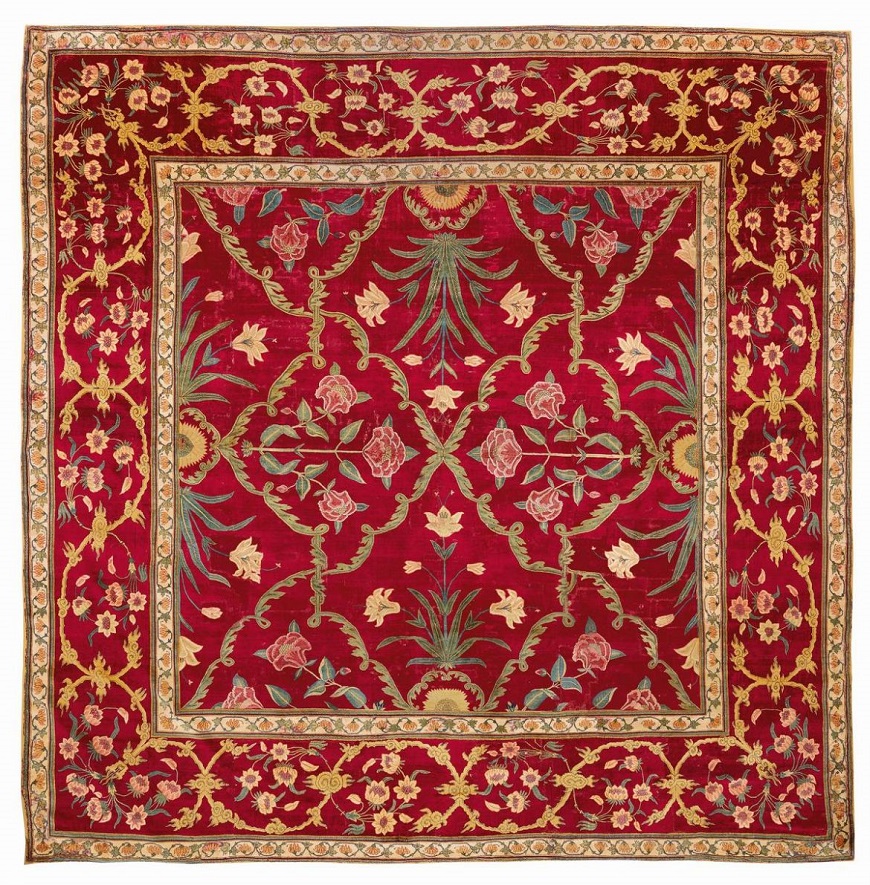
Srinagar- A rare Mughal era pashmina carpet from the 17th century has been sold for a whopping 5.42 million pounds in London.
The 9 feet by 8 feet carpet had an estimated price of £2.5 million to £3.5 million, but finally sold for almost double that. The carpet which is now almost square was earlier over 14 feet long. Three smaller fragments from the same carpet are known to have survived, two are in museums, the third is privately owned.
“Due to the fragility of the silk and the finely spun pashmina pile very few examples survive, making a carpet of this size and condition an extraordinarily rare survivor from the golden age of Imperial Mughal carpet production,” said a Christie’s press release.
The carpet was a highlight in Art of the Islamic & Indian Worlds including Oriental Rugs and Carpets sale which totalled £15,989,352. The auction comprised 265 lots, including works of art, paintings, carpets and manuscripts from the 9th through to the 20th century, and from Spain to India.
As per Christie’s, this carpet is an important example of the new Flower Style in Mughal India which became popular in architectural decoration and the decorative arts under Shah Jahan (r. 1628-58). The style is distinguished by a wide range of flowers – roses, lilies, carnations and sunflowers among others — depicted in profile and arranged in rows. The Flower Style in Indian art can be traced back to the 1620 visit of Mughal Emperor Jahangir (r.1605-27) to Kashmir. Mansur, his favourite natural history painter, accompanied him on the trip and produced more than 100 paintings of local flowers, three of which survive. However, it was not until after 1630 that the vast majority of court carpets woven in India reflected the new taste for the Flower Style which dominated carpet design as well as all aspects of Mughal art.
Follow this link to join our WhatsApp group: Join Now
Be Part of Quality Journalism |
Quality journalism takes a lot of time, money and hard work to produce and despite all the hardships we still do it. Our reporters and editors are working overtime in Kashmir and beyond to cover what you care about, break big stories, and expose injustices that can change lives. Today more people are reading Kashmir Observer than ever, but only a handful are paying while advertising revenues are falling fast. |
| ACT NOW |
| MONTHLY | Rs 100 | |
| YEARLY | Rs 1000 | |
| LIFETIME | Rs 10000 | |












